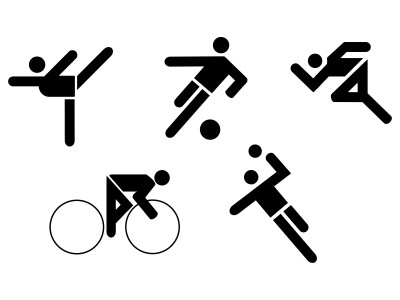More on stability and mobility
Written by: Paul Kochoa, PT, DPT, OCS, CKTP, CGFI
Allow me to go on a tangent here, talking more about stability and mobility. You’ve probably read about the core and stability/mobility thoughts here before. Today, I’m going to take it back to something that I learned way back when I first started in this field of physical therapy as an aide/exercise specialist. I was relatively new to the field back then and didn’t know too much about all this stability and mobility work. But it made sense when the therapists there explained it to me and to the patients: You can’t have distal mobility without central stability.
Previously, I’ve written about the hip/knee and shoulder/scapula relationships in terms of stability in a joint to allow for movement in sports and everyday activities. Here, we’ll talk just globally, not just narrowly thinking about a joint or limb, but the whole body as it moves. At this clinic that I worked at, they used the big physioballs that are found in gyms everywhere, and they combined it with a regular six foot long stick from the hardware store. They called it their stick and ball exercises.
What it did was work on core stability in a functional way. Imagine just sitting on the ball, feet shoulder width apart. Just sitting on the ball in this position, certain things happen. They started gently bouncing on the ball so that they could find their stability, they activated their core in the sitting position and gained proprioceptive feedback and balance cues from the bouncing. From here, they gave the patients one end of the stick, and the other end, the therapist would hold onto it. Using the stick, they provided manual resistance to a push and pull motion in a variety of directions. The resistance was variable, with the therapist adding pertubations to the movement. What this did was force the patients to remain stable on the ball, while trying to be mobile in the arms: central stability with distal mobility.
Now let’s extrapolate this to everyday life. You can imagine going to pick up your laundry basket off the floor, or moving that pot from the stove to the dining room table. All these movements require central stability with distal mobility. The core should be activated with the spine in neutral (low back neutral, and neck/head in neutral) which will allow for a stable base to move the legs and arms to accomplish any tasks efficiently and without injury. Central stability with distal mobility. It’s not just for a ball and stick exercise anymore.
If you would like more information, please call Professional Physical Therapy and Training at 973-270-7417. Our offices are located within the YMCA locations in Madison and Summit, NJ. You do not need to be a member of the YMCA to visit with us.
Image courtesy of Salvatore Vuono / FreeDigitalPhotos.net